We are currently focused on somewhat rare laser and nonlinear crystals such as Cr: ZnS and GaSe. The Cr: ZnS crystals are commonly named “Ti: Sapphire of mid-infrared” thanks to their broadband emission in the 2000-2600 nm wavelength range. Importantly, they emit in the water-vapor-free range of the atmosphere, which makes the laser operation easy and practical to set up.
Here, you can see the thermal-diffusion doped polycrystalline samples of Cr: ZnS, which we have manufactured at the end of 2023.
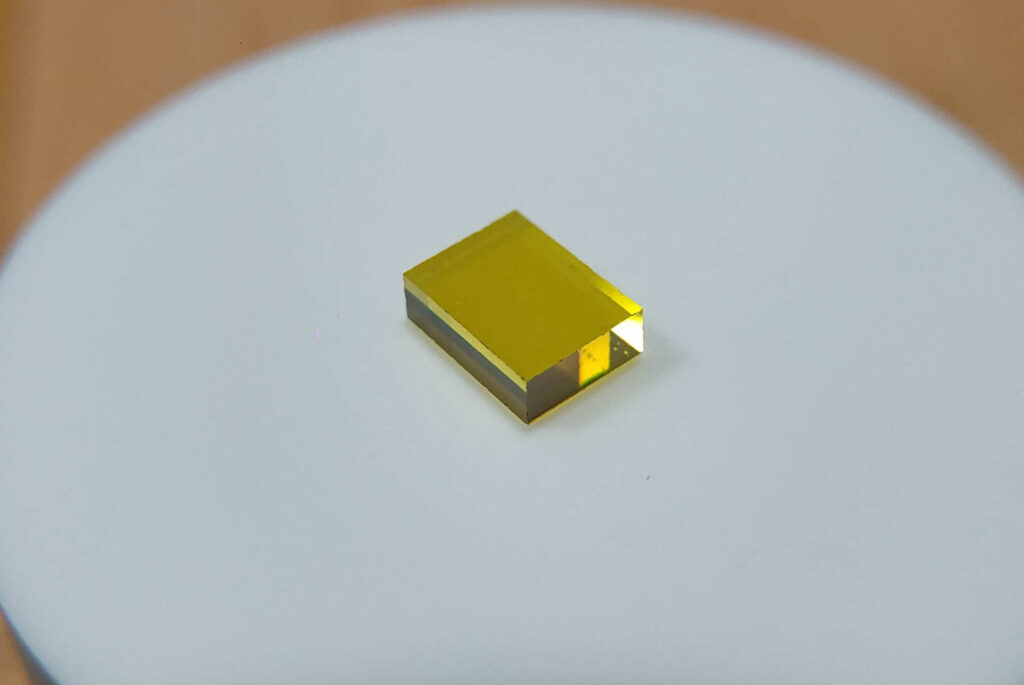
In this specific case, the crystal dimensions 4x5x2 mm. All small sides (2×4 mm, 2×5 mm) are optically polished. Large 4x5mm sides have inspectional polishing. We have manufactured more crystals as we needed such that we can share those with other research groups to facilitate the development of Cr: ZnS laser technology.
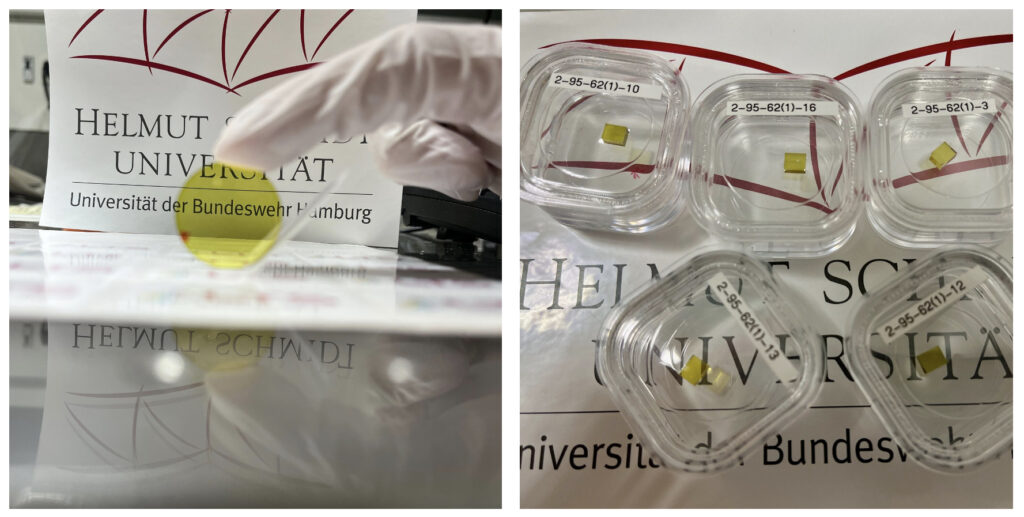
These crystals have the following diffusion doping profile:
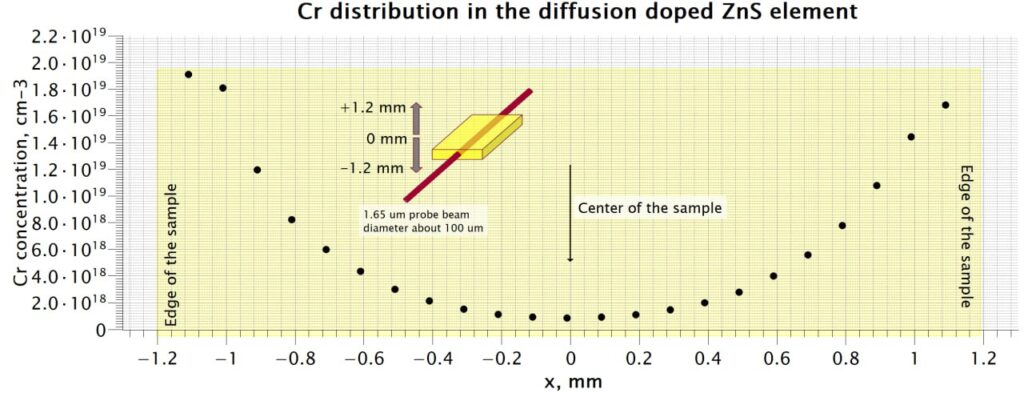
Here is another batch manufactured recently, in July 2024. This has a higher doping concentration.
This picture will be provided shortly.
The laser oscillators based on those crystals show good performance in CW and mode-locked regimes, comparable to those crystals from IPG Photonics. For example, here is the mode-locked output of the Cr:ZnS oscillator we developed in-house.
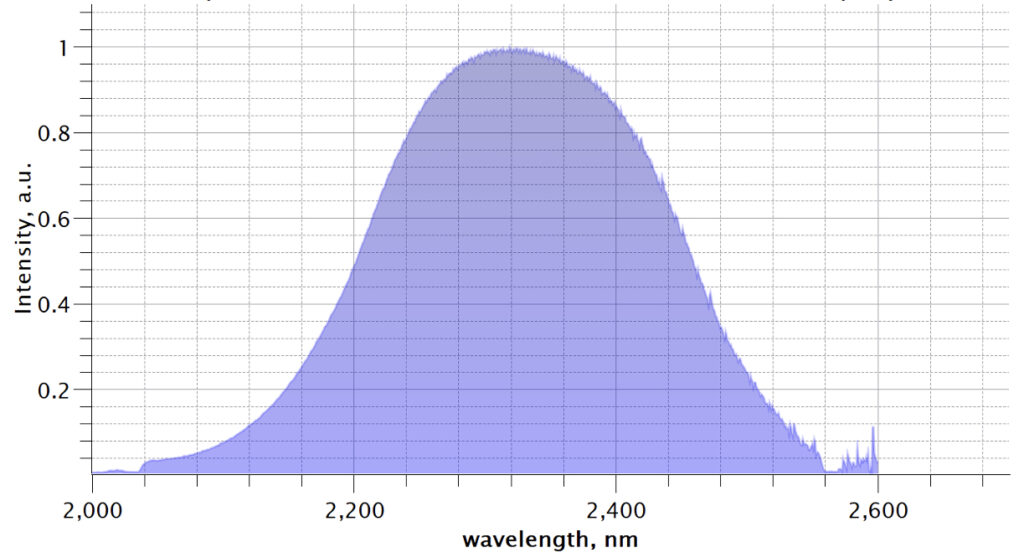
As for the GaSe crystals, we have only done a few iterations. The crystals are grown in Bridgrman’s two-zone furnace. You can see that the second iteration resulted in an excellent single crystal growth.
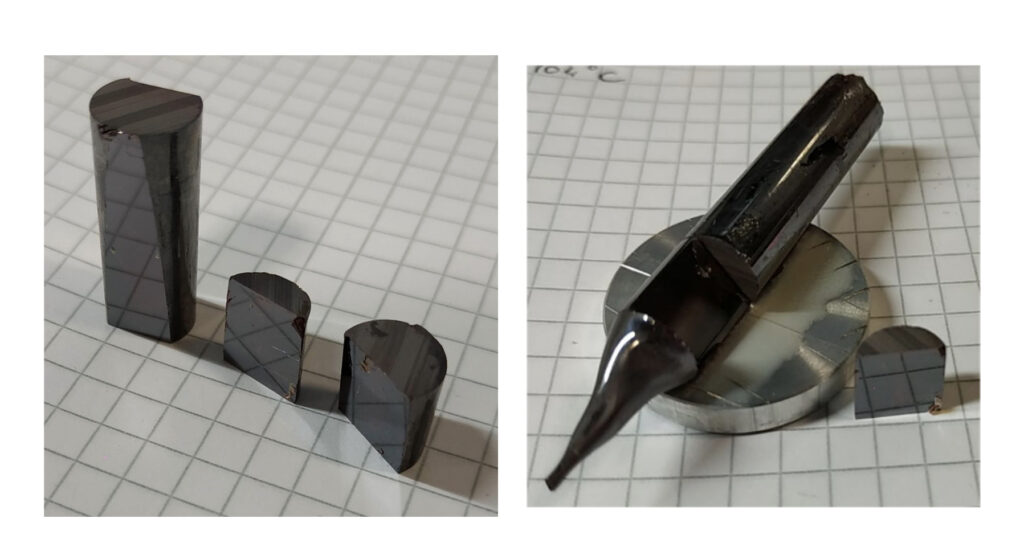
The transmission spectrum of GaSe is shown below. This corresponds well to the theoretical (text-book) transmission of GaSe. The oscillations are due to the interference in a thin GaSe crystal.
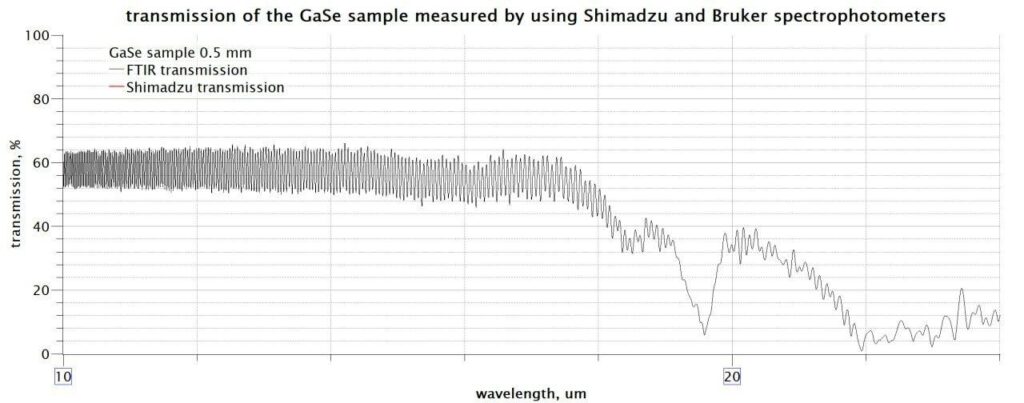
These crystals still need to be tested regarding their nonlinear properties in applications such as electro-optics sampling and intra-pulse difference frequency generation. If you wish to have a sample for test purposes, for free, please contact me oleg.pronin@hsu-hh.de
The main credit goes to Nazar Kovalenko and Thomas Thiel.
Letzte Änderung: 8. October 2024

